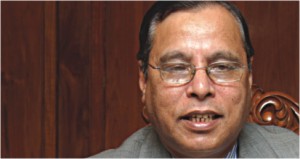 |
||
|
Best Financial Institution The banker to the masses Sajjadur Rahman
Pubali Bank is known for its eventful journey that spans 51 years. It is also known for its eye-popping performance, growth and innovations. The amazing thing is how Pubali Bank cut its non-performing loans to a mere 2.96 percent in 2009 from 18.40 percent five years ago. It was over 35 percent in 2000. The bank has made staggering profits in the past five years with nearly 20 percent growth in deposits, loans and advances and remittances for half a decade. It has maintained a stronghold amid tough challenges and competition with local and foreign peers. Many bankers say Pubali can be a role model for other state-owned commercial banks struggling for years. It is hard to believe Pubali had been a "problem bank" for over a decade. The bank's poor performance prompted Bangladesh Bank to assign an observer to monitor its activities. Pubali took more than a decade to get out of the list of problem banks. The central bank withdrew its observer in November 2007. “There is no readymade formula for doing well. Hard work, prudent managerial decisions and guidelines from the board helped us gain a foothold in the industry,” said Helal Ahmed Chowdhury, managing director of the bank. Chowdhury has been with Pubali for 33 years. From a senior officer to chief executive, he has witnessed many ups and downs. He led the transition of Pubali from a nationalised bank to a private one. At the end of 2009, the bank's deposits stood at Tk 8,846 crore, up from Tk 7,306 crore in 2008, while advances (investments) increased to Tk 7,420 crore from around Tk 5,000 crore a year ago. The operating profit rose to Tk 412 crore in 2009 from Tk 365 crore in the previous year. The bank handled imports worth nearly Tk 6,000 crore and exports worth Tk 2,500 crore in 2009. Both segments witnessed over 20 percent growth. In 2009, the bank channelled Tk 3,525 crore in remittances -- a 25 percent growth over the previous year. The MD attributed the steady growth to the board's policy of non-interference and good governance. The bank is now emerging as a giant with a countrywide network and fast services. Numerous deposit and lending products are on offer. Of the 386 branches, 150 will roll out online services by the year-end. The bank will install 100 ATMs this year. A disaster recovery centre, a data centre and a remittance cell will also be set up and 15 new branches, mostly in rural areas, will take the tally to 401, all this year. The bank will set up seven exchange houses to boost remittance. The central bank has already issued licences for three houses. It will ramp up loans for migrant workers this year. It opened a window for Islamic banking and two offshore banking units earlier this year. It has other units to deal with stockmarket and offer commercial services. Pubali has become a specialised financier for health care services. It funded Birdem, the country's largest diabetic hospital, Square, United and Apollo hospitals. The largest private bank by assets, Pubali celebrated its golden jubilee last year. In 1959, some Bangalee entrepreneurs launched the bank as Eastern Mercantile Bank Ltd. It was renamed Pubali Bank after independence in 1971. AK Khan, OR Nizam, MR Siddiqui, Khan Bahadur Mujibur Rahman, Mirza Mohammad Ali Ispahani, Habibur Rahman and Dr Naimur Rahman were the notable sponsors. “Eastern Mercantile Bank paved the way for Bangalee entrepreneurs to do business at that time,” said Monzurur Rahman, the longest-serving director of the bank. As a young entrepreneur, Rahman became a director of the bank in 1967 and still is. The bank played a courageous role during the Liberation War. It stopped remitting money from East to West Pakistan at Bangabandhu Sheikh Mujibur Rahman's call. During the war, the Bangalees deposited money with the bank as the West Pakistanis operated all other banks.
|
||
